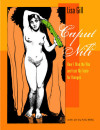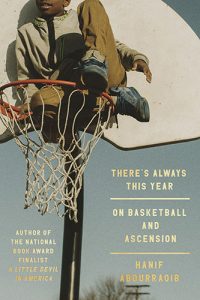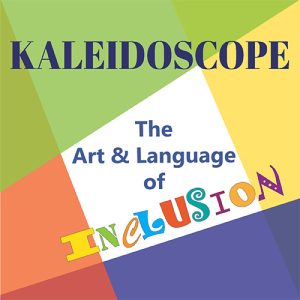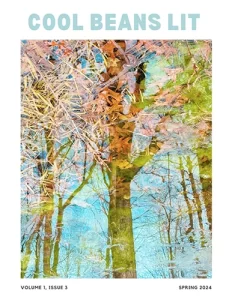Caput Nili
If a writer addresses conditions of extremity, does that exempt the work from critique, putting it somehow beyond the pale? Objectivist poet Charles Reznikoff wrote Holocaust, a volume based on testimony from the Nuremberg Trials. There were times when it seemed to me that collection lacked what Gabriel Garcia Marquez considered a first condition for literature: “poetic transfiguration of reality.”
If a writer addresses conditions of extremity, does that exempt the work from critique, putting it somehow beyond the pale? Objectivist poet Charles Reznikoff wrote Holocaust, a volume based on testimony from the Nuremberg Trials. There were times when it seemed to me that collection lacked what Gabriel Garcia Marquez considered a first condition for literature: “poetic transfiguration of reality.”
Caput Nili, a hybrid work of poetry and prose by Lisa Gill and art by Kris Mills, details the poet’s “impossible journey” through the mental health system, exploring sexual abuse and American violence. Mills’s “Portrait of Woman with Rabbit Hole” alludes to Alice Liddell of Lewis Carroll’s Alice books, and Gill’s account has a Through the Looking Glass quality as the author negotiates a system seemingly predicated on illogic. The collection is fierce, harrowing, clear-eyed, flawed, and necessary.
Gill recounts her early history of medication for mood swings and insomnia, and her childhood determination to write. Doctors labeled her manic depressive, the old term for bipolar disorder. Later, Gill would be diagnosed with temporal-lobe epilepsy, said to account for her ecstatic states. The effect was devastating: “Everything mysterious and beautiful was becoming clinical.” Mills’s art deconstructs and “re-visions” female representations much as Gill challenges psychiatric orthodoxies.
For Gill, medical records comprise a counter-narrative that lessens her authorial power. As an NEA poetry fellowship recipient, however, Gill’s recognition is its own validation.
“Interpersonal Arghing” looks at violence in daily life—as threat, predation, and reciprocity. Gill describes horrific experiences of domestic abuse in plain language as though simply to tell effort is enough. Therapy and education is clearly part of the poet’s intent, hence lines that are more like epigrams: “self-preservation is instinct.” While Gill’s language is precise as always, what often disappears is the verbal play of volumes such as Red as a Lotus and Dark Enough; she even opts for a bromide: “Did I tell you I love life?”
“Fuse” addresses sexual assault and domestic violence. One in four women will be victimized by sexual assault, most rapes occurring between 16 and 24 years of age. What the author learned from such predation was to fight back, to “call bluffs,” to challenge racial myths about rape.
In “White Coat Cavortions,” Gill recounts her threat to hold up an MRI clinic with a shotgun, an act eventually validated by a confirmation of “severe multiple sclerosis.” As with the other poems, Gill writes with an awful flatness: “when I held a cigarette to my arm / when I quit eating / when I overdosed / when I put a blade into my wrist.” While medication can stabilize, the diagnosis of mental illness has the consequence of stigmatizing, marginalizing, rendering the patient voiceless. The author exposes hierarchies of power, even acts of predation, within the health care system itself.
Gill’s description of untreated MS symptoms reads like slapstick: “I’d become a stumblebum, a teeterer, a total wobbler…Wriggle, flinch, cartwheel.” She wrests linguistic delight from the body’s loss of control. Sensation in a toe leads from despondency to a “wiggling rejubilation.”
Most affectingly, Gill recalls her post-traumatic stress disorder (PTSD):
The muck.
The mire.
The partially remembered
and mostly forgotten.
She writes, “The MRI is a crime scene photo” of abuse. According to Harvard psychiatrist Martin Teicher, “such abuse…induces a cascade of…neurobiological effects that irrevocably alter neural development.” Thus Gill discovers a linkage between trauma and disease, arriving at something “akin to acceptance,” yet her memories of childhood abuse remain fragmentary.
Though her research shows only “correlations” between trauma and disease, a Veterans Administration study demonstrably proved that the percentage of veterans with an autoimmune disorder is higher among those who have PTSD. A World Health Organization study showed that women who were domestic violence victims experienced poorer health later in life than those who weren’t.
Gill’s possession of a shotgun leads to an unexpected but unapologetic epiphany: “Violence is learned and I’ve been schooled.” She rejects victim status. Violence is “Entrenched. / Ingrained. / Systemic.” Its psychic costs are fear, submission, and dissociation. The epiphany leads her to self-empowerment, female empowerment, and the work to build a burgeoning life. If PTSD is linked to disease, Gill speculates about the potentialities of life’s pleasures: “Listening to Monk and pining for your own Nellie at dusk.”





